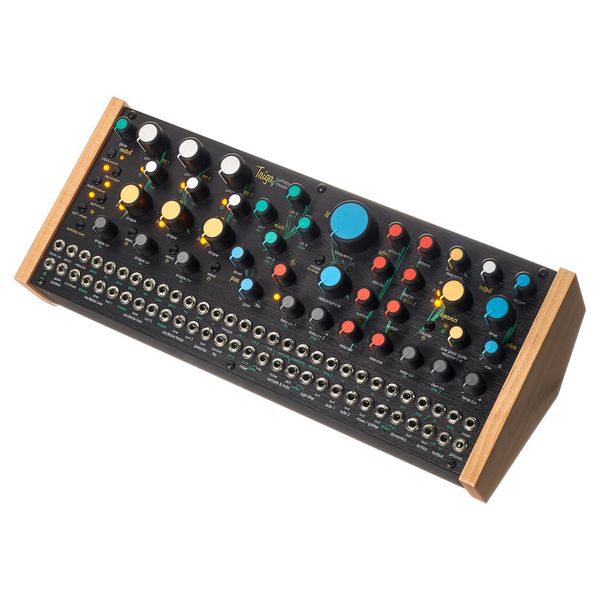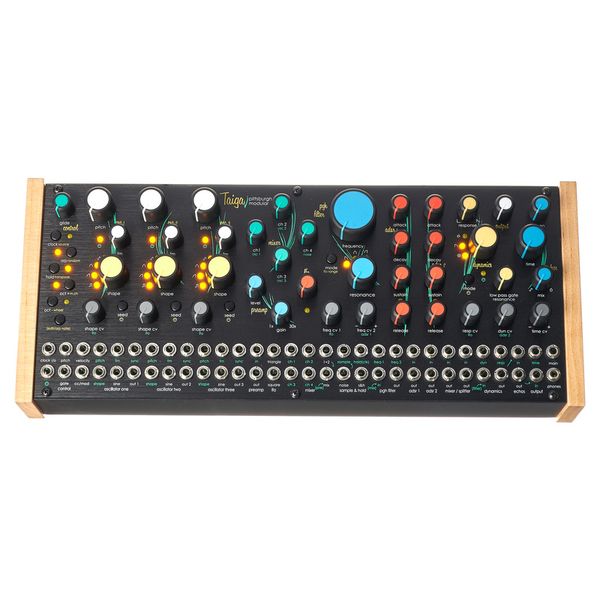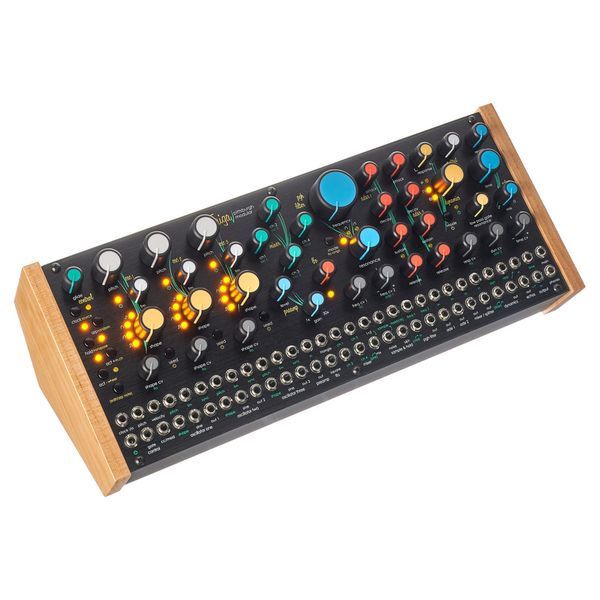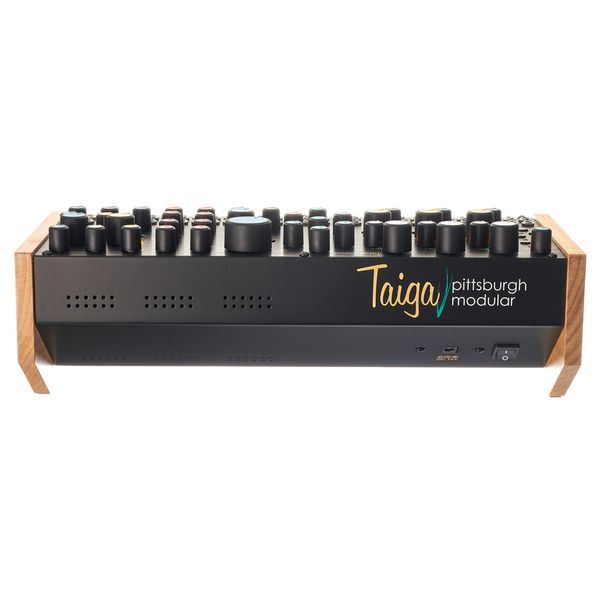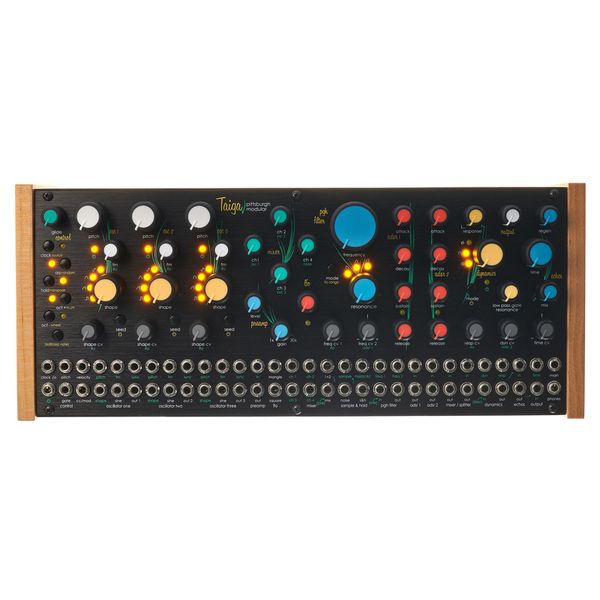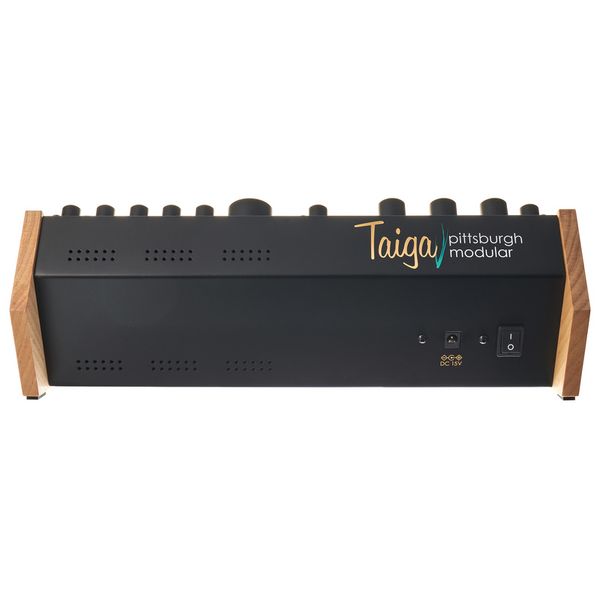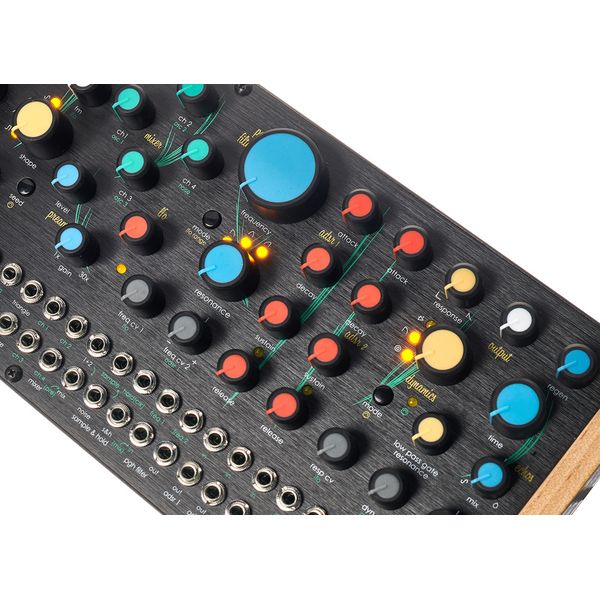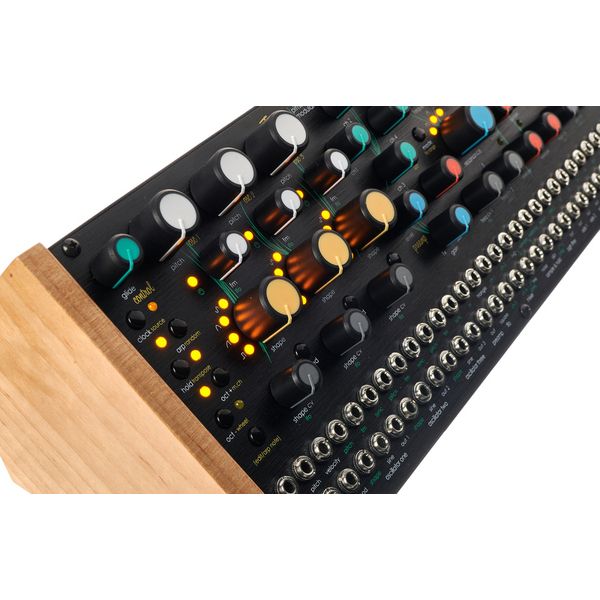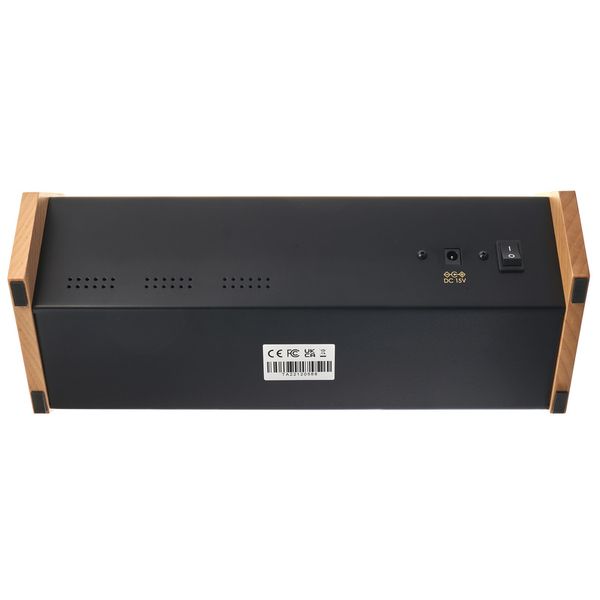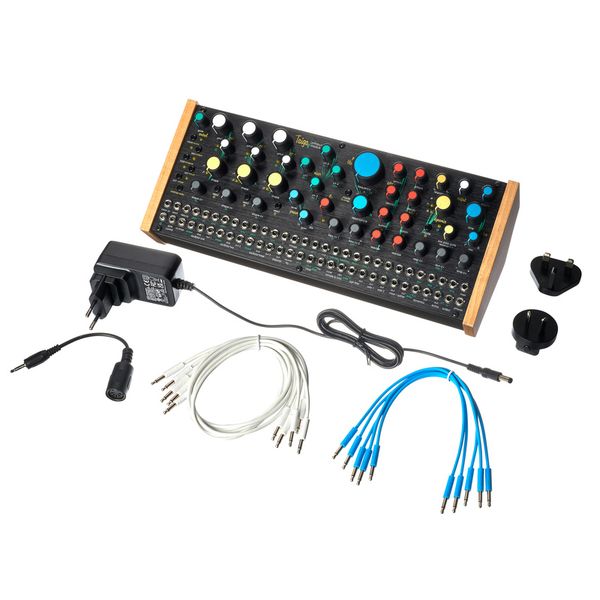Da der Taiga von Pittsburgh Modular vor über zwei Monaten seinen Weg in mein Studio gefunden hat, ist es nun an der Zeit, eine Rezension dazu zu schreiben. Ich tue das längst nicht für alle Geräte die ich verwende, aber hier finde ich es angebracht.
Zunächst hatte ich etwas Startschwierigkeiten: Das mitgekaufte Klinkenkabel hatte einen Kurzschluss und mein Taiga war wohl in der Endkontrolle auf Midikanal 16 gestellt worden. So dauerte es etwas, bis ich dem Gerät den ersten Ton entlocken konnte. Das Klinkenkabel war zu diesem Zeitpunkt schon nicht mehr im Sortiment, so daß ich es nicht bewerten konnte. Nachdem die Startschwierigkeiten überwunden waren, machte sich Freude breit. Der Taiga entspricht ziemlich genau dem, was ich mir vorgestellt hatte.
Ich hatte mich bereits etwas mit dem Ansatz der West-Coast-Synthese vertraut gemacht, wenn auch nur virtuell mit Arturias Easel V. So waren die Wavefolder und das Low-Pass-Gate nicht total neu für mich.
Das Gerät ist für meine Begriffe sehr gut verarbeitet, ich hatte bis jetzt nichts auszusetzen. Der Umgang mit dem Gerät erweckte bei mir den Eindruck, daß man sich über viele kleine Details sehr viele Gedanken gemacht hat und vieles sehr elegant gelöst hat. Zum Beispiel begrüße ich, daß man komplett ohne Display auskommt. Die Einstellungen des MIDI-Interfaces können komplett über einige Taste und Status-LEDS erledigt werden. Allerdings muss ich zugeben, daß dieser Ansatz natürlich radikal minimalistisch ist. Ich begrüße das, anderen mag es nicht so gehen. Die Beschriftungen sind sehr vollständig und komplett farbcodiert. So wird klar was ein Ein- oder Ausgang ist oder für welche Funktionen die Shift-Taste nötig ist. Auch die Regelbereiche der VCOs finde ich gut gelöst. VCO1 hat einen recht kleinen Stimmbreich, VCO2 +/- eine Oktave und VCO3 +/- 2 Oktaven, Midi-Kopplung vorausgesetzt.
Überhaupt zieht sich Radikalität durch das ganze Design. Der Taiga versucht nicht, es allen recht zu machen. Der Filter ist sehr weich, hat eine wunderbare Resonanz und ist kaum in die Selbstoszillation zu treiben. Auch dünnt die Resonanz den Grundklang nicht aus. Mir gefällt das sogar wesentlich besser als das Filter von meinem Minimoog Voyager. Das heißt nicht, daß man mit dem Taiga nicht auch "dreckige" Klänge machen kann. Sobald FM und die drei Wavefolder ins Spiel kommen, ist das kein Problem. Die Hüllkurven haben einen sehr breiten Einstellbereich. Man kann lange Ein- und Ausklingphasen damit realisieren. Natürlich wird das Variieren schneller Hüllkurven etwas schwieriger. Auch die Bauform an sich ist extrem. Ich habe selten einen Synthesizer gesehen, der so viele Funktionen und Bedienelemente auf so kleinem Raum unterbringt. Mobiler Einsatz ist so kein Problem. Das hat natürlich zur Folge, daß die Potis und Schalter recht dicht gepackt stehen. Ein schönes Plus ist das BBD-Delay am Ende der Signalkette. Die Delay-Zeit ist übrigens modulierbar.
Der Taiga ist wohl kein Synthesizer für alle, bei mir aber hat er einige offene Türen eingerannt. Wenn man sich auf sein Designkonzept einlässt, wird man mit einem tollen Klang belohnt. Er kann wunderbar weiche Klänge erzeugen, die mit Hilfe der Wavefolder sehr schön lebendig werden. Aber auch harte "Industrial"-Sachen bis hin zum totalen Lärm sind problemlos machbar. Und zumindest mir geht es so: Dinge über die ich anfangs die Stirn gerunzelt hatte, ergeben in der Praxis Sinn und erweisen sich als extrem nützlich.
Ein Minuspunkt, und es wird scheinbar in den meisten Rezensionen im Netz so erwähnt, ist die Helligkeit der orangefarbenen LEDs. Die sind wirklich so hell, daß sie mich blenden. Warum die so hell sein müssen und ob das bei der Entwicklung nicht schon jemandem aufgefallen ist ... ? Selbst Behringer bekommt das mit der Helligkeitsregelung im B2600 gut in den Griff. Ich persönlich hätte mir noch eine Spannungssteuerung beim LFO gewünscht, aber ein weiteres LFO kann ja modularerweise leicht nachgerüstet werden.
Trotz dieser kleinen Minuspunkte halte ich das Gerät für sehr gelungen. Dafür spricht allein schon die Zeit, die ich seit dem Kauf damit verbracht habe.


